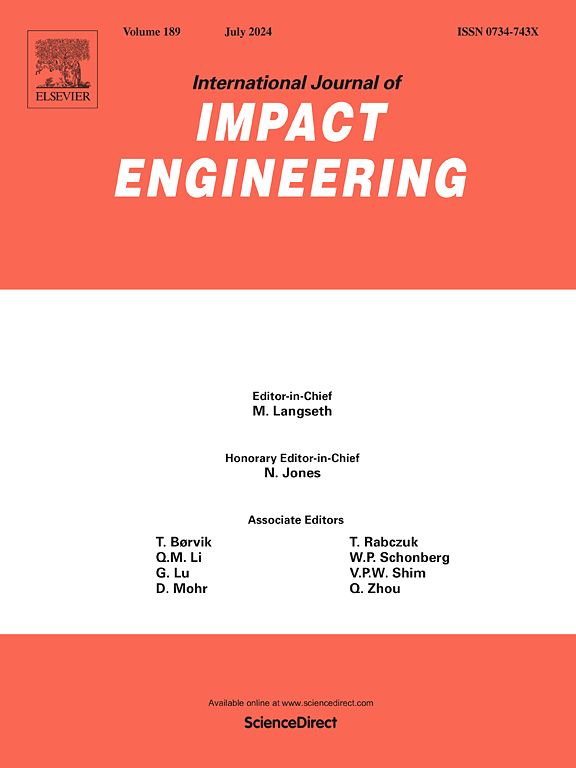A theoretical model for estimating hypervelocity impact generated plasma (HVIGP) considering phase transitions
IF 5.1
2区 工程技术
Q1 ENGINEERING, MECHANICAL
International Journal of Impact Engineering
Pub Date : 2025-04-11
DOI:10.1016/j.ijimpeng.2025.105341
引用次数: 0
Abstract
Simulation of hypervelocity dust impact generated plasma has been based on experimental fitting, ignoring the impact behavior process, resulting in a disadvantage using at velocity beyond fitting range. Aming on improve simulation model of the impact plasma generation, this article establishes a forward simulation paradigm from the theory of impact behavior to plasma diffusion. By using the higher-order wave velocity and material velocity relationship, as well as the phase transition equation of state, the research model establish a fine simulation extend impact condition upto 1000 GPa, and achieves a consistent description of the impact behavior to the impact ionization process. The model demonstrates a promising correspondence with experimental results, as in close proximity to the magnitude and comparable exponential growth patterns.
考虑相变的超高速碰撞等离子体(HVIGP)估计理论模型
超高速尘埃撞击产生等离子体的模拟一直基于实验拟合,忽略了撞击行为过程,导致在速度超出拟合范围时使用的缺点。本文在改进冲击等离子体生成模拟模型的基础上,建立了从冲击行为理论到等离子体扩散的前向模拟范式。通过使用高阶波速与材料速度的关系,以及相变状态方程,该研究模型建立了一个精细模拟扩展到 1000 GPa 的冲击条件,并实现了从冲击行为到冲击电离过程的一致描述。该模型与实验结果的对应关系良好,与实验结果的大小和指数增长模式十分接近。
本文章由计算机程序翻译,如有差异,请以英文原文为准。
求助全文
约1分钟内获得全文
求助全文
来源期刊

International Journal of Impact Engineering
工程技术-工程:机械
CiteScore
8.70
自引率
13.70%
发文量
241
审稿时长
52 days
期刊介绍:
The International Journal of Impact Engineering, established in 1983 publishes original research findings related to the response of structures, components and materials subjected to impact, blast and high-rate loading. Areas relevant to the journal encompass the following general topics and those associated with them:
-Behaviour and failure of structures and materials under impact and blast loading
-Systems for protection and absorption of impact and blast loading
-Terminal ballistics
-Dynamic behaviour and failure of materials including plasticity and fracture
-Stress waves
-Structural crashworthiness
-High-rate mechanical and forming processes
-Impact, blast and high-rate loading/measurement techniques and their applications
 求助内容:
求助内容: 应助结果提醒方式:
应助结果提醒方式:


